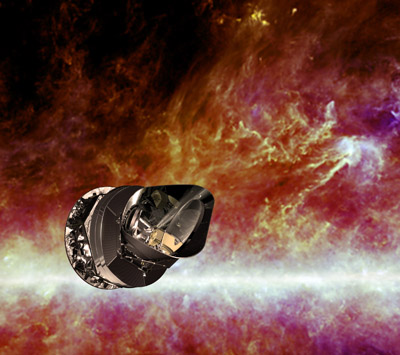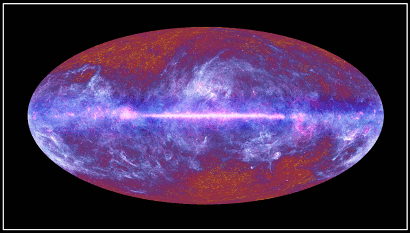M
MeteorWayne
Guest
Planck is now the coldest thing in space. It has now reached it's operation temperature of 0.1 K.
That's just a tenth of a degree C above absolute zero.
On July 3, the European Space Agency's Planck spacecraft reached this frigid extreme as part of a key step in the satellite's mission to observe the remnant radiation of the Big Bang.
Since its launch on May 14 (accompanied by its sibling spacecraft Herschel), Planck has been traveling to its final orbit at the second Lagrange point of the sun-Earth system, L2, and cooling its instruments down to their operational temperature of minus 459.49 degrees Fahrenheit (minus 273.05 Celsius). This temperature is just 0.1 Celsius above absolute zero, the coldest temperature theoretically possible in our universe.
"It is indeed both the coldest spot in any spacecraft that we know about, and also the coldest known object in space, including dust, gas etc.," Planck project scientist Jan Tauber wrote in an email. "Of course in a laboratory on Earth, colder spots can be made."
Such low temperatures are necessary for Planck's detectors to study the Cosmic Microwave Background (CMB) — the first light released by the universe, only 380,000 years after the Big Bang — by measuring its temperature across the sky.
Over the next few weeks, mission operators will fine-tune the spacecraft's instruments. Planck will begin to survey the sky in mid-August.
posting.php?mode=post&f=6
That's just a tenth of a degree C above absolute zero.
On July 3, the European Space Agency's Planck spacecraft reached this frigid extreme as part of a key step in the satellite's mission to observe the remnant radiation of the Big Bang.
Since its launch on May 14 (accompanied by its sibling spacecraft Herschel), Planck has been traveling to its final orbit at the second Lagrange point of the sun-Earth system, L2, and cooling its instruments down to their operational temperature of minus 459.49 degrees Fahrenheit (minus 273.05 Celsius). This temperature is just 0.1 Celsius above absolute zero, the coldest temperature theoretically possible in our universe.
"It is indeed both the coldest spot in any spacecraft that we know about, and also the coldest known object in space, including dust, gas etc.," Planck project scientist Jan Tauber wrote in an email. "Of course in a laboratory on Earth, colder spots can be made."
Such low temperatures are necessary for Planck's detectors to study the Cosmic Microwave Background (CMB) — the first light released by the universe, only 380,000 years after the Big Bang — by measuring its temperature across the sky.
Over the next few weeks, mission operators will fine-tune the spacecraft's instruments. Planck will begin to survey the sky in mid-August.
posting.php?mode=post&f=6









